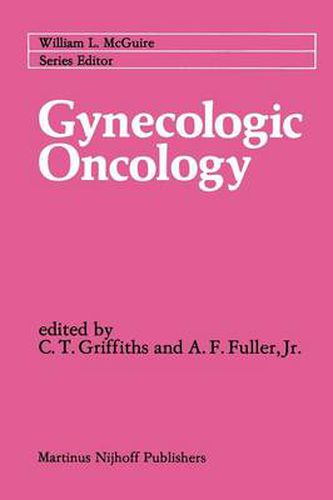Readings Newsletter
Become a Readings Member to make your shopping experience even easier.
Sign in or sign up for free!
You’re not far away from qualifying for FREE standard shipping within Australia
You’ve qualified for FREE standard shipping within Australia
The cart is loading…






This title is printed to order. This book may have been self-published. If so, we cannot guarantee the quality of the content. In the main most books will have gone through the editing process however some may not. We therefore suggest that you be aware of this before ordering this book. If in doubt check either the author or publisher’s details as we are unable to accept any returns unless they are faulty. Please contact us if you have any questions.
At the turn of the century gynecology had achieved independence from surgery in most medical schools; although gynecologists were surgeons, their interests were turning toward nonsurgical aspects of their specialty. In 1900, merely two years after the Curies’ discovery, radium was first used as a treatment for carcinoma of the cervix. In that day cervical cancer claimed more women’s lives than any other malignancy and was described by Wil liam P. Graves, the second professor of gynecology at Harvard as follows: ‘Cancer of the cervix may rightly be termed of all tumors one of the most deadly and most ghastly. It kills by slow torture, causing in later stages months of agonizing pain and producing a discharge of such a foul and nauseating character as to repel proper medical assistance. Nurses declined to care for these cases, while many public hospitals closed their wards to them as patients. ’ In late twentieth century parlance the dramatic results of radium therapy would indeed have been called a ‘breakthrough’? and radium techniques, later combined with external irradiation, were devel oped by gynecologists, no longer just surgeons. Pathology was the basic science of gynecology and gynecologists with a special interest in pathology served as pathologist to the departments of gynecology. As late as 1970 six months of the three-year residency program in obstetrics and gynecology at Harvard were devoted to formal training in pathology.
$9.00 standard shipping within Australia
FREE standard shipping within Australia for orders over $100.00
Express & International shipping calculated at checkout
This title is printed to order. This book may have been self-published. If so, we cannot guarantee the quality of the content. In the main most books will have gone through the editing process however some may not. We therefore suggest that you be aware of this before ordering this book. If in doubt check either the author or publisher’s details as we are unable to accept any returns unless they are faulty. Please contact us if you have any questions.
At the turn of the century gynecology had achieved independence from surgery in most medical schools; although gynecologists were surgeons, their interests were turning toward nonsurgical aspects of their specialty. In 1900, merely two years after the Curies’ discovery, radium was first used as a treatment for carcinoma of the cervix. In that day cervical cancer claimed more women’s lives than any other malignancy and was described by Wil liam P. Graves, the second professor of gynecology at Harvard as follows: ‘Cancer of the cervix may rightly be termed of all tumors one of the most deadly and most ghastly. It kills by slow torture, causing in later stages months of agonizing pain and producing a discharge of such a foul and nauseating character as to repel proper medical assistance. Nurses declined to care for these cases, while many public hospitals closed their wards to them as patients. ’ In late twentieth century parlance the dramatic results of radium therapy would indeed have been called a ‘breakthrough’? and radium techniques, later combined with external irradiation, were devel oped by gynecologists, no longer just surgeons. Pathology was the basic science of gynecology and gynecologists with a special interest in pathology served as pathologist to the departments of gynecology. As late as 1970 six months of the three-year residency program in obstetrics and gynecology at Harvard were devoted to formal training in pathology.